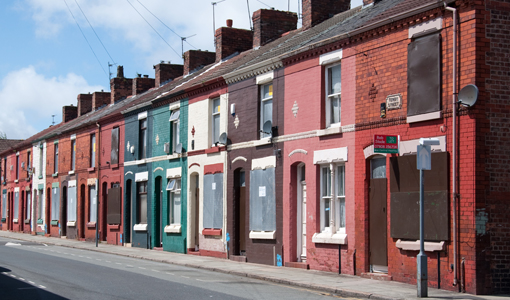Written by:
It’s about time that we looked at more creative, small-scale interventions to improve neighbourhoods and bring our failing streets, towns and city centres back to life.
The recent announcement from Liverpool City Council of their £1 homes homesteading initiative, which follows a similar scheme launched by Stoke-on-Trent council, is a step in the right direction.
This approach is not new. A similar initiative was introduced through Baltimore’s homesteading project in 1975, when 104 homes in the blighted Otterbein area were raffled by the city for $1. The winners were sold the houses for $1 and given $30,000 in financing in return for committing to returning these 18th century row (terrace) houses to their original glory and to living in them for at least seven years. The city on its part committed to invest in improved infrastructure, roads and future development.
It worked. Homeowners invested in their houses, transforming rat-infested, blighted houses into functional and indeed elegant homes and the city invested in infrastructure provided vital protection and support in the early years of the project. Forty years on, this is now a sought after area, not only for the quality of the streets and homes themselves, but due to its position near the also regenerated harbour with its many shops, restaurants and access to city life.
What was so clever about the initiative, and what holds such potential in Stoke and Liverpool, is that the city invested in local people to help transform the neighbourhood while making complementary tactical investment in infrastructure. The raffle brought diversity to the neighbourhood by bringing together a broad spectrum of people with different backgrounds, but a shared commitment to building a home for their own families and to bringing the place back to life.
The test for both Liverpool and Stoke councils will be how they work with the new homeowners and other local stakeholders to create homes, streets and neighbourhoods that people are proud to call their own.
At the recent Glass-House Debate in Liverpool, ‘Does engaging local people in placemaking make good business sense?’ both the panel and audience challenged the current reliance on private sector investment conditioned by land and property values. All agreed that this development model was a tool in the placemaking box, but that we should be a bit more creative about diversifying how we bring places back to life, and who is doing it. There was also a very clear message that we should be building all homes as if we were building them for someone we love.
While the “dollar row houses” were a rare financial investment opportunity for the residents involved, it required a level of commitment in time as well as money. It simply wasn’t possible to do the place up, sell it and make a quick profit. They had to work to make it a place they wanted to live in.
If policy makers, officials and communities alike want to find solutions to the housing crisis then we all need to step up to the challenge of finding creative ways to invest in places. We’ll watch what happens in Stoke and Liverpool with hope and expectation. What can we learn from this approach? And will they encourage other councils, particularly those with large portfolios of empty properties, to invest in similar and other innovative ways to reinvigorate the places in which we live, work and play?

